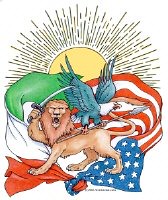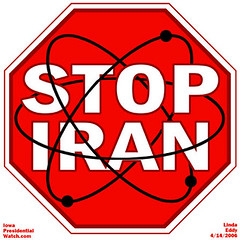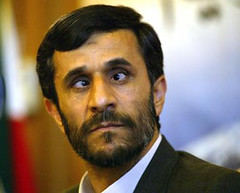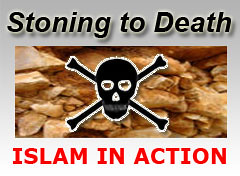Sunday, July 08, 2007
MAIN TYPES OF TERRORISTS
Counterterrorism Blog
Understanding & Disrupting Terrorist Financing:
Types of Terrorist Groups
By Dennis Lormel
This is the second in a series of five articles. In order to disrupt terrorist financing, there must be a more comprehensive understanding of the multi-dimensional elements involved in the funding process. The previous article provided an overview of four components that must be included in training in order to establish a framework for understanding the complexity of terrorist financing. Through knowledge, we increase our opportunities to develop successful disruptive mechanisms.
The four components include:
1. Types of terrorist groups
2. Funding capacity
3. Mechanisms for fundraising and operations
4. Individuals and cells
This article focuses on types of terrorist groups.
The first step in understanding terrorist financing is to differentiate the myriads terrorist groups. In developing an understanding, you must learn about terrorist groups, the nature of their threat, the scope of their operational reach and their financial infrastructure.
Terrorist groups possess certain similarities. However, they differ in many respects due to demographic and logistical considerations, to include how and where they operate, raise funds, launder funds and disburse funds.
Although the need for funds and the operational goals and funding demands for major terrorist groups like Al-Qaeda, Hezbollah and Hamas may be similar, the sources of funds, actual operations and application of funds are vastly different.
It is critically important to draw the distinctions in operations and funding requirements between various groups in order to develop and implement group specific strategies that disrupt and diminish their ability to raise, launder and disburse funds. The successful disruption and diminishment of funding flows adversely impacts terrorist operations, thereby reducing their ability to attack.
Based on an assessment issued by the FBI on January 11, 2007, in conjunction with Director Robert Mueller’s testimony before the Senate Select Committee on Intelligence, the following groups were identified as threats to the United States (U.S):
Al-Qaeda
Since 9/11, Al-Qaeda has gone from operating as a terrorist group, with an organizational structure, to evolving into an ideology aligned with regional terrorist groups, back to a group being reconstituted as an organization.
In essence, Al-Qaeda the group versus Al-Qaeda the ideology presents overlapping challenges and a sense of confusion.
Regardless of the form, as a group or an ideology, Al-Qaeda has been a constant threat to U.S. security. It still seeks to infiltrate operatives into the U.S. to conduct catastrophic attacks. The genesis of Al-Qaeda has caused changes in the manner it raises and uses funds.
In the period around 9/11, Al-Qaeda relied on wealthy donors and charities for much of its funding. As the organization became disrupted and less identifiable due to U.S. government action, pressure was brought to bear on wealthy Middle Eastern donors and charities, especially in Saudi Arabia.
This led to greater reliance on criminal activities to raise funds. As Al-Qaeda becomes more visible as an organization again, it is likely that new funding sources and donors will emerge. On the other side of the ledger, Al-Qaeda’s funding needs went from being extremely large as an organization to less demanding as an ideology.
The reemergence of an organization will require an increase of organizational funding requirements. Operational activities continually require funding sources. If funds are not available through the group, the operators will have to generate funding through their own devices to include criminal activity.
Regional Terrorist Groups aligned with Al-Qaeda
Since 9/11, regional groups have emerged as a significant threat. They are more autonomous and in many instances have adopted Osama Bin Laden’s ideology. Groups to include:
Jemaah Islamiah,
Ansar Al-Islam,
Moroccan Islamic Combatant Group (GICM), and
Salafist Group for Call and Combat (GSPC)
are examples of highly dangerous and visible regional groups aligned with Al-Qaeda.
In the pre 9/11 environment and shortly thereafter, these groups received funding from Al-Qaeda. When Al-Qaeda’s organizational presence diminished, so did its funding support. These groups rely on their own fundraising mechanisms, to include criminal activity. Certain of these groups may receive some state sponsored funding. It will be interesting to monitor Al-Qaeda’s reemergence to determine if they again provide funding to regional groups.
Homegrown Cells
The homegrown threat is posed by self-radicalized groups and individuals already living in the U.S. who are inspired but not led by Al-Qaeda. These groups pose vastly different threats and capabilities in comparison to Al-Qaeda. For the most part, they have proven to be unsophisticated and operate on a small scale. Many of these individuals have funded themselves through legitimate jobs.
Because of the small scale of their operations, they have not required significant funding. In other countries, in addition to legitimate jobs, homegrown terrorists have funded themselves through government entitlement programs.
Shia Extremists
The most notable Shia terrorist group is Hezbollah. Hezbollah is centered in Lebanon.
A great deal of its funding comes from state sponsors Iran and Syria. In addition, Hezbollah has established a worldwide infrastructure that raises significant amounts of funding through organized criminal activity and questionable business practices.
In fact, in many respects, Hezbollah operates like a traditional organized crime family in terms of its criminal activity.
Almost all terrorist groups operate based on ideology. Hezbollah operates with a sense of ideology but also with a sense of greed, like an organized crime family. Most other terrorist organizations do not operate with a sense of greed.
Hezbollah also requires considerably more money because of its position in Lebanon and its outreach and marketing as a "benefactor" to the Lebanese people.
In addition to state sponsors and criminal activity, Hezbollah has raised significant funds through donations from the global Lebanese expatriate community. Although the U.S. has designated Hezbollah a terrorist organization, many countries have not, making it easier for Hezbollah to raise funds in those venues.
Palestinian Terrorist Groups
Palestinian terrorist groups include Hamas and Palestinian Islamic Jihad (PIJ). Their activities have emanated from the Palestinian territories and have focused their attention on Israel.
Hamas is the most recognizable Palestinian terrorist group, especially since gaining political leadership in Palestine. The U.S. recognizes Hamas as a terrorist organization. As is the situation with Hezbollah, many countries do not, which makes fundraising in those territories viable.
The fighting between Hamas and Fatah for power has consumed the Palestinians and has split the territory with Hamas controlling Gaza and Fatah the West Bank. Hamas relies on charities, donations, friendly Arab States and state sponsors for funding.
Hamas has been particularly skillful in using charities for fundraising and logistical support for their terrorist activities. The U.S. and Israel have led an international sanctioning effort against Hamas which has successfully limited, restricted or denied funding sources through banking channels. This has adversely impacted Hamas’ operating capability. Hamas has had to rely on informal financial channels such as bulk cash shipments and couriers to receive funding.
Domestic Terrorist Groups
Domestic terrorist groups are those groups operating strictly within the U.S. They encompass a broad spectrum of groups motivated by a number of political and social issues. These groups include white supremists, militia/sovereign citizen movements, black separatists, animal rights activists and environmental extremists.
Funding sources for these groups usually originate with group members, sympathizers or group generated revenue. Groups generate revenue from front companies, either legitimately or illegitimately.
In the case of the National Alliance, they raised funds through the sale of books and publications. Certain of these groups also generate funds through the sale of false identification documents.
Terrorist financing is extremely challenging to identify and deal with. Understanding that varying organizations have unique operational considerations, requiring different financial infrastructures, sets the foundation for understanding and developing methodologies to counter these infrastructures and disrupt the flow of funds.
Subscribe to:
Post Comments (Atom)














No comments:
Post a Comment